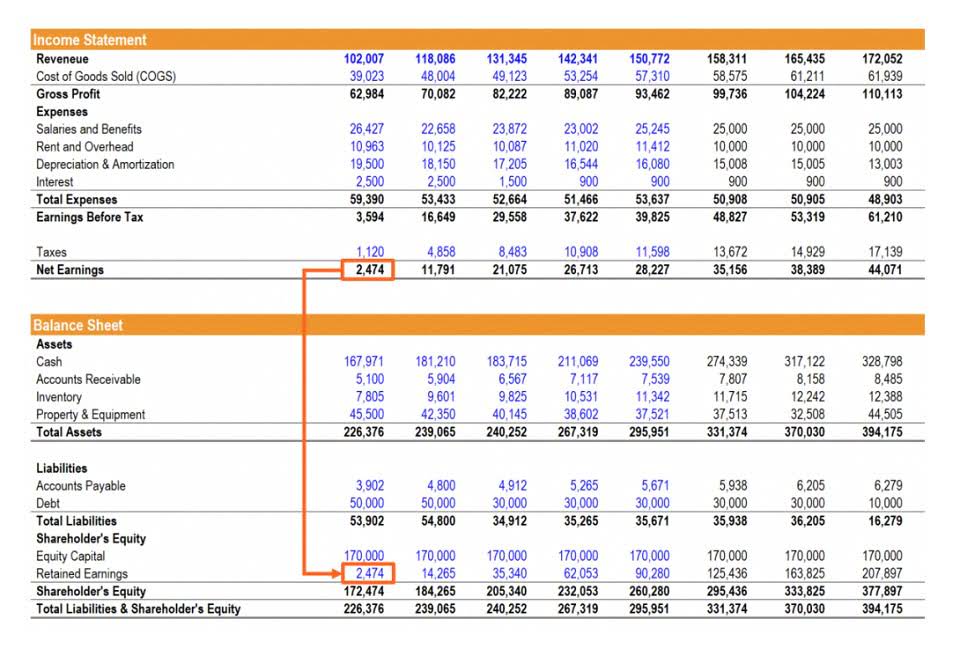Content

Analysts compare financial ratios to industry averages , industry standards or rules of thumbs and against internal trends . The most useful comparison when performingfinancial ratio analysisis trend analysis. Financial ratios are derived from the three financial statements;Balance Sheet,Income StatementandStatement of Cash Flows. It’s calculated by dividing your earnings by your interest payments due within a given time period. This type of ratio is also referred to as the times interest earned ratio.

The cash ratio measures a business’s ability to use cash and cash equivalent to pay off short-term liabilities. This ratio shows how quickly a company can settle current obligations. Businesses use financial ratios to determine liquidity, debt concentration, growth, profitability, and market value.
Operating Profitability Ratio Analysis
Simply stated, financial ratios are tools that can turn your raw numbers into information to help you manage your business better. Many small business owners look at gross sales or net income on a regular basis, but those figures can only tell you so much. Financial ratios help you read between the lines, providing insight from seemingly inconsequential numbers. In other words, it measures the amount an investor would pay for each dollar earned.

The book value per share measures the value per share for common equity owners based on the balance sheet value of assets less liabilities and preference shares. The operating margin measures how much profit a company generates from net sales after accounting for the cost of goods sold and operating expenses. Companies use liquidity ratios to measure working capital performance – the money available to meet your current, short-term obligations .
Interest Cover
In fact, this is one of the key ratios that help the investor identify investable attributes of the company. The average RoE of top Indian https://www.bookstime.com/ companies varies between 14 – 16% to give you a perspective. I personally prefer to invest in companies that have an RoE of 18% upwards.
Why is debt ratio important?
Debt ratios measure the extent to which an organization uses debt to fund its operations. They can also be used to study an entity's ability to pay for that debt. These ratios are important to investors, whose equity investments in a business could be put at risk if the debt level is too high.
While there are a number of KPIs you can choose to track, financial ratios only use information that can be found on your financial statements. Some other KPIs may use data that you need from other sources, like website traffic and customer satisfaction scores. Receivables management is a vital component of ensuring strong cash flow.
Accounting Topics
In contrast, companies, which are not profitable but are cash rich, do not survive in the long term either. Such companies are taken over for their cash flow or by others who believe that they can improve the profitability of the business. Thus, those companies that do succeed and survive over the long term have a well-rounded financial profile, and perform well in all aspects of financial analysis. The acid test or quick ratio is the current ratio Financial Ratios modified to provide a more prudent measure of short-term liquidity. The acid test ratio deducts stock and work-in-progress from current assets. This approach is more cautious as it recognizes that stock is not always readily converted into cash at full value. Short-term liquidity ratios – these include the current ratio and the acid test ratio and measure how easily the company can meet its short-term financial commitments like paying its bills.
Too high a ratio may suggest over-trading, that is too much sales revenue with too little investment. Too low a ratio may suggest under-trading and the inefficient management of resources. The fourth type of financial ratio analysis is the business risk ratio.
Return on Equity
Profitability ratios are used to measure how much income a company is able to generate after accounting for factors such as operating costs, taxes and debt payments. These ratios are crucial for business owners as well as potential investors who may be researching your company. Liquidity ratios provide information about a firm’s ability to meet its short-term financial obligations.
- Descriptive statistics, factor analysis and analysis of variance were performed.
- Liquidity refers to how easily a company can turn assets into cash to pay short-term obligations.
- Businesses use financial ratios to determine liquidity, debt concentration, growth, profitability, and market value.
- For example, if a small business depends on a large number of fixed assets, ratios that measure how efficiently these assets are being used may be the most significant.
- A fundamental analyst should be cognizant of this fact and adjust the data accordingly before computing the financial ratio.
- Financial Ratios Calculators help determine the overall financial condition of businesses and organizations.
The current assets used in the quick ratio are cash, accounts receivable, and notes receivable. Short-term creditors prefer a high current ratio since it reduces their risk. Shareholders may prefer a lower current ratio so that more of the firm’s assets are working to grow the business.
Every quarter, get the information that you need from your accounting system and calculate the ratios. This may take a little time the first couple of times you do it, but over time it will become easier and faster. The higher your gross margin, the more money you have remaining to pay for your other necessary business expenses.
The ratios convey how well the company can perform in terms of generating profits. The profitability of a company also signals the competitiveness of the management. As the profits are needed for business expansion and to pay dividends to its shareholders, a company’s profitability is an important consideration. Small business owners would be well-served by familiarizing themselves with ratios and their uses as a tracking device for anticipating changes in operations. The use of financial ratios is also referred to as financial ratio analysis or ratio analysis. That along with vertical analysis and horizontal analysis are part of what is known as financial statement analysis.
Accounting policies may vary across companies and different financial years. A fundamental analyst should be cognizant of this fact and adjust the data accordingly before computing the financial ratio.
- Ultimately, you should focus on areas of your business that are currently of the highest priority to your treasury department and executive suite.
- To to be meaningful, most ratios must be compared to historical values of the same firm, the firm’s forecasts, or ratios of similar firms.
- If interest coverage is less than 1, then EBITDA is insufficient to pay off interest, implying finding other ways to arrange funds.
- It involves the study of economic, industry, and company information.
Clearly, it appears that both the EBITDA margin and EBITDA growth are quite impressive. To find out if it is the best one needs to compare these numbers with its competitors. I would encourage you to do the same for Exide and compare the results. If your sales-per-employee ratio is high, that means your business is very efficient with how it uses its resources .
